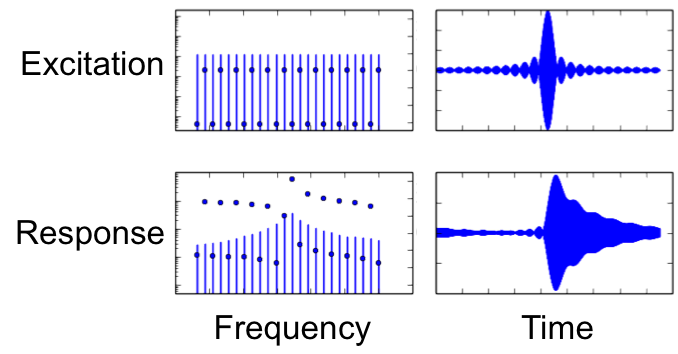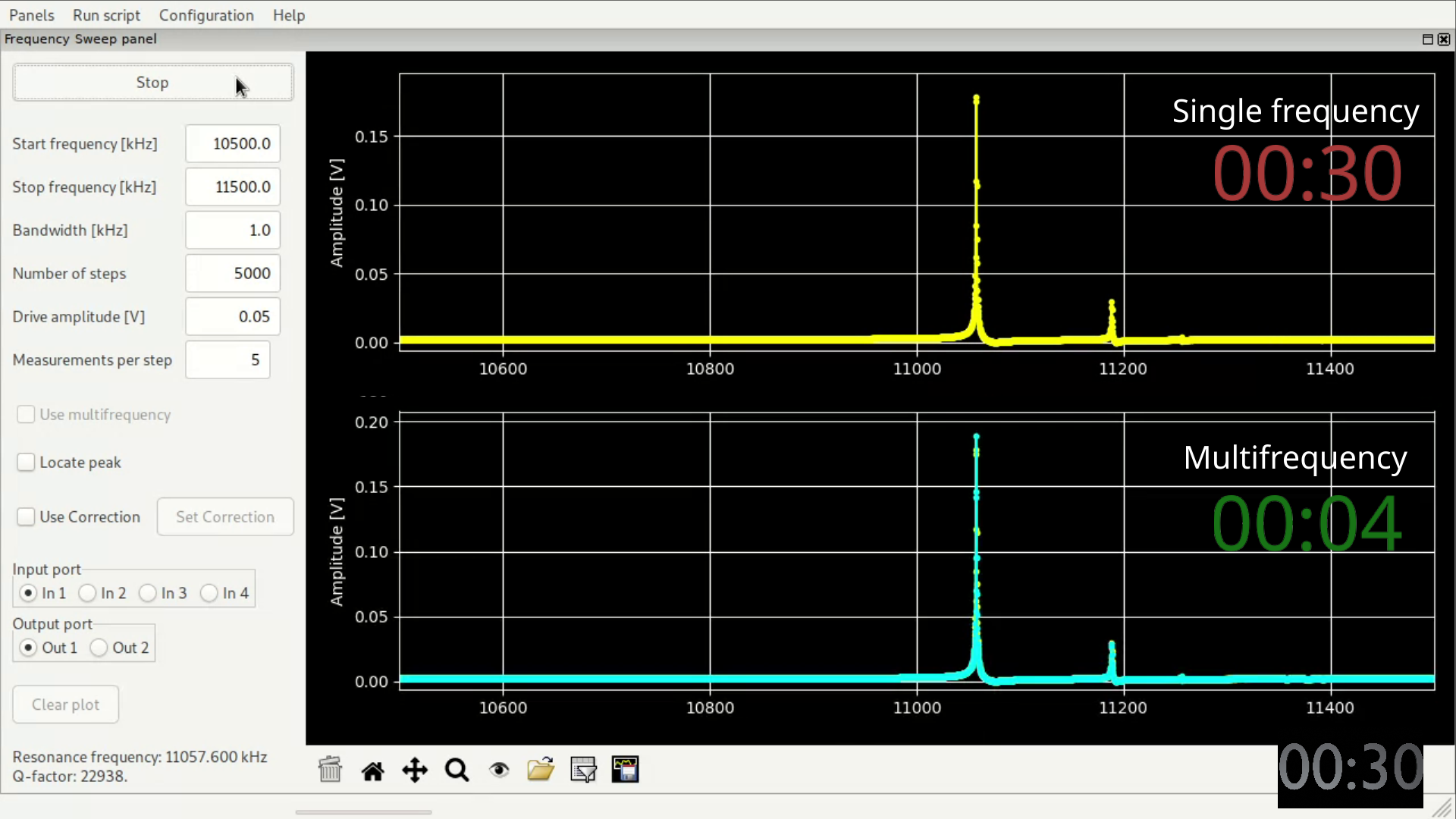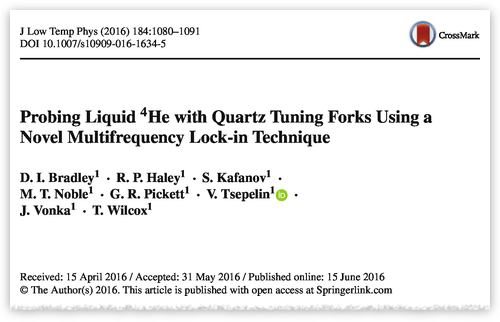Lock in amplifier
A lock-in amplifier is a type of amplifier that can extract a signal with a known carrier wave from an extremely noisy environment. A multifrequency lock in amplifier can simultaneously extract noisy signals at many frequencies. Multifrequency Lock-in Amplifier MLA-3 can measure signals at up to 32 frequencies simultaneously. Signals that are at least 60 mHz apart can be detected without leakage.
Solution: The Multifrequency Lock-in Amplifier MLA-3 synthesizes a multifrequency signal consisting of a carefully tuned linear superposition of many tones. A comb of closely-spaced tones gives a sinc pulse in the time domain. When this signal drives a linear system-under-test, it responds to each tone independently of all other tones. The MLA measures the response at each tone with zero leakage between tones. The linear response function of the system-under-test is found by dividing complex numbers at each tone - drive divided by response. This simple division does not work for a nonlinear system because the tones intermodulate.
Click on the image for more details
Single shot can be combined with frequency sweeping to speed up the acquisition of broad frequency sweeps with high resolution. See the video for a comparison between a regular, single-frequency sweep taking 30 s (top), while the same sweep with the multifrequency option takes just a few seconds (bottom).
Solution: Multifrequency Lock-in Amplifier MLA-3 can output and measure 32 frequencies at the same time, while Presto can output and measure 192 frequencies at the same time, making frequency sweeps many times faster. See the video for a comparison between a regular, single-frequency sweep taking 30 s (top), while the same sweep with the multifrequency option (on MLA-3) takes just a few seconds (bottom).
Click on the video for more details
Solution: Quartz crystal tuning forks oscillating in superfluid helium at ultra-low temperatures have extremely high Q mechanical resonance. A group at the University of Lancaster used the Multifrequency Lock-in Amplifier MLA-3 to simultaneously and rapidly measure the resonance curves of many tuning forks. Intermodulation measurements reveal subtle nonlinear damping effects when the velocity of the tines reaches the Landau critical velocity.
User: Dr David Bradley, Lancaster university, UK


